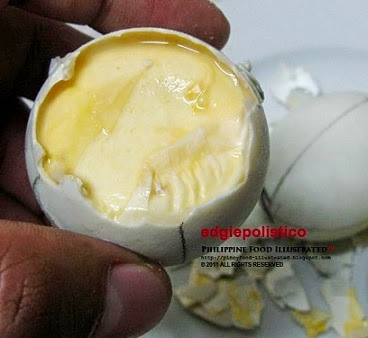angkak – /ang-kàk/ (Tagalog and Capampangan food coloring and fermentation agent; dw Chin. Hokkien an khak [reddish leaves used in fermentation] < an [red] + khak [shell or husk]) [n.] red yeast rice (sc.name: Monascus purpureus)
I found this angkak rice in the public market of Cabanatuan City, Nueva Ecija in July 2017.
Angkak is a Mandarin orange food coloring. A Chinese tangerine food coloring obtained from a plant with reddish leaves, or rice treated with species of red mold.
This angkak rice is priced at PHP320.00 a kilo when I found it in the public market of Cabanatuan City, Nueva Ecija in July 2017.
Angkak rice is not for cooking into kanin (boiled or steamed rice), but can be added to cooking rice as a food color.
The Capampangans, Bulaqueños, Novo Ecijanos, and Tagalogs are fond of using angkak in coloring and as a fermentation agent for burong isda (fermented cooked rice with fresh fillet of freshwater fish, i.e. tilapia, bangus, ayungin, etc.), and in bagoong alamang (shrimp paste, a.k.a. balaw-balaw).
Angkak produces bright pastel pink color, a classic food coloring that is now fast disappearing because of artificial instant food colorings.
All photos of Edgie Polistico are copyrighted. ALL RIGHTS RESERVED.
See Index of Entries here
If you liked this post, share it.
Let us know your opinion on the subject. Feel free to comment in the comment section, below. It is important for us to know what you think.
Tell us what other topics you would like us to write, share, and discuss.
Continue to follow my blogs. You can also follow and learn more by joining us in our Facebook group. Have more bits and pieces about our kind of food, ingredients, and ways of cooking, dining, and knowing food culture across the 7,641 islands of the Philippines.
Encouragement and enthusiasm are not enough. I also need moral support, prayers, and anything else that can uplift my spirit and keep my good reasons. Keep them coming. All I know is that I am happy with what I am sharing and giving away. If you are pleased and happy with what I am doing, just smile and please share the happiness. Keep sharing and include to share the PHILIPPINE FOOD ILLUSTRATED. I feel energized when my blog becomes one of the reasons why you are happy and smiling.
Edgie Polistico
For more about Filipino food, see this Philippine Food, Cooking, and Dining Dictionary. It is OPEN and FREE.
















